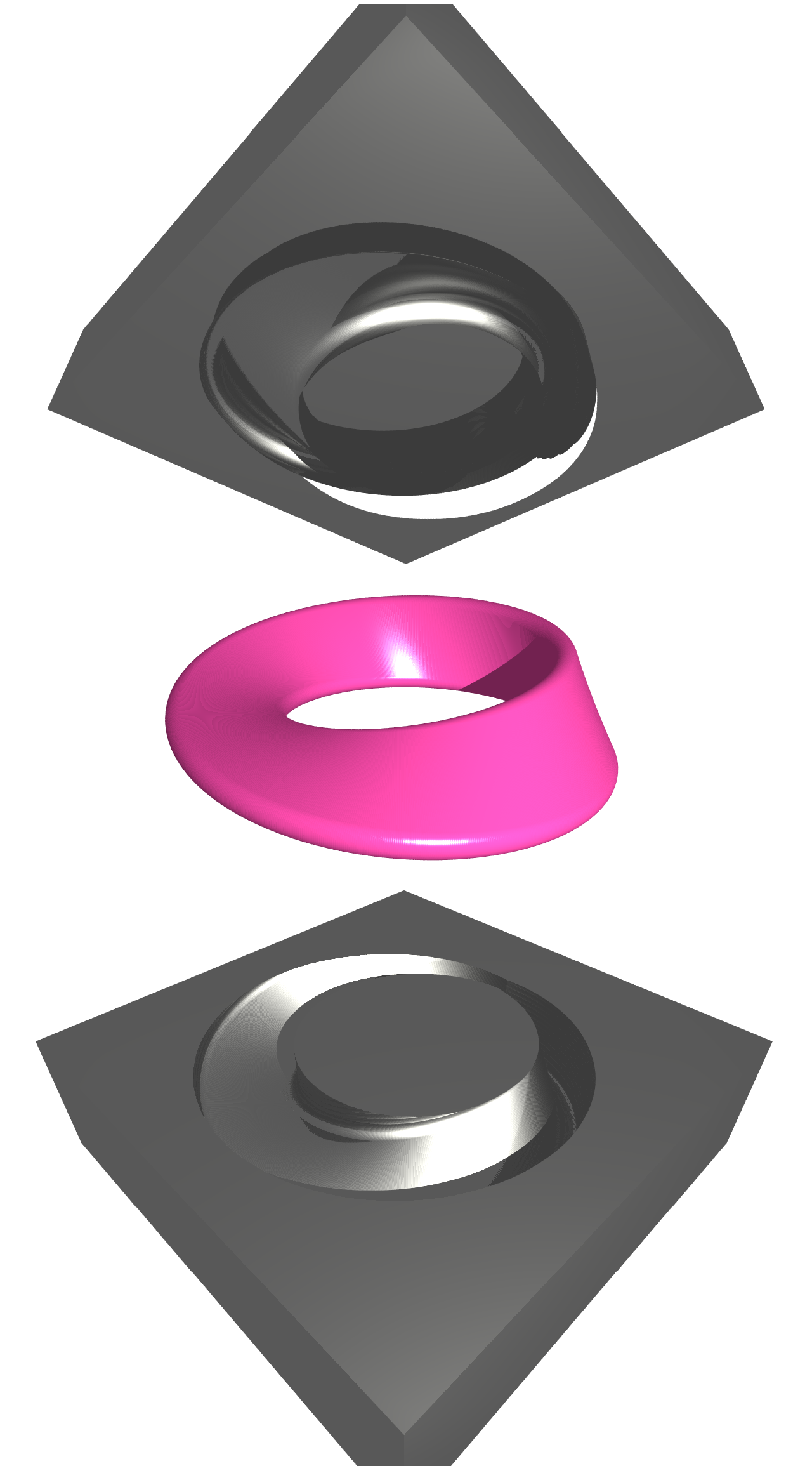[2009-06-04] Two-part Moebius strip mold

Like three years ago I was having lunch with my brother and my father in a local Italian restaurant when the possibility of Moebius-strip pasta occurred to me. Our collective intuition, at the time, was that it would be impossible to produce an openable mold of a Moebius strip for mass production. We imagined some kind of elaborate machine that would extrude fettuccini in the conventional manner, then cut it in short lengths, twist one end by one-half turn, and somehow weld it back onto itself. Which would be a pretty involved, expensive manufacture for such a gimmicky product. The idea really amused me, however, so I posted it to Halfbakery, and got lots of great feedback. One of the commenters ultimately persuaded me that a two-part Moebius strip mold was possible.
(Another popular suggestion, which was to feed a wide flat strip of dough into a conventional pasta maker, then put a half-twist in the partially-sliced output strip and join it back to itself before running it the rest of the way through, would not work. Slicing a Moebius strip, it turns out, does not generally produce another Moebius strip. Depending on where you position the slice relative to the strip center, the operation can at best produce a single smaller Moebius strip, but generally produces loops having two or more half-twists. This is one of the Moebius strip's many mind-bending properties.)
Anyway. I had a very hard time visualizing the mold design until I changed the way I was thinking about the strip itself. The most intuitive way to understand a Moebius strip, after all, is as a ring that has a half-twist at some point along its circumference. This, after all, is how Moebius strip models are usually constructed. The symmetrical Moebius strip, in which the deflection of the half-twist is evenly distributed around the entire circumference of the strip, is much more rarely encountered. Fortunately, this is the form of the strip which is easiest to model using an algorithm, and, indeed, I was able to find a nice POV-Ray loop tutorial that renders a Moebius strip with this property. It's the pink thing in the middle of the above image.
Experiments with this form using POV-Rays constructive solid geometry (CSG) functions led me to understand the two-part Moebius strip mold in the following way: First, imagine a solid rectangular prism of appropriate size. Then, materialize a Moebius strip right in the middle of its volume, subtracting (of course) the corresponding negative volume from the rectangular prism. Now, move the Moebius strip straight up along the Z-axis, sweeping out the volume it traverses as you go, and continuing until the entire strip is well clear of the rectangular prism. The block, with the cavity you have just swept out, forms one-half of the mold (the bottom half as shown).
Now replace the Moebius strip in its original location. It will fill part of the cavity in the original block, resting at the bottom of the open channel it has just swept out. Now imagine taking a cast of the volume of the channel that remains, and fusing that casting, at the top plane of the original block, to a second rectangular "backing block" that rests on top of the first block. This second solid is the top half of the mold. Remove the Moebius strip, reunite the two blocks, and fill the resulting cavity by some conventional process to produce duplicate strips. Obviously, suitable vent and pouring orifices, which are omitted here for simplicity, would have to be incorporated.
last modified 2009-06-04